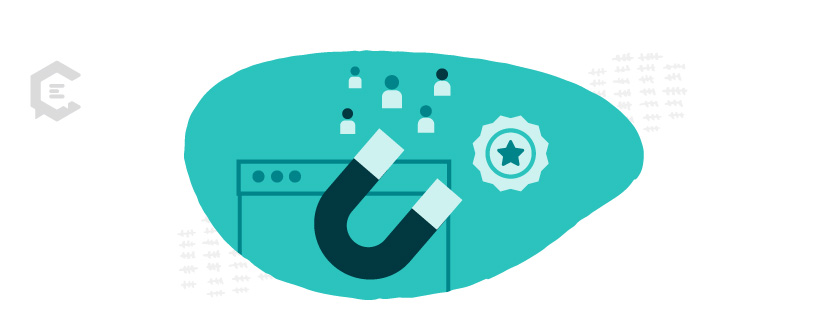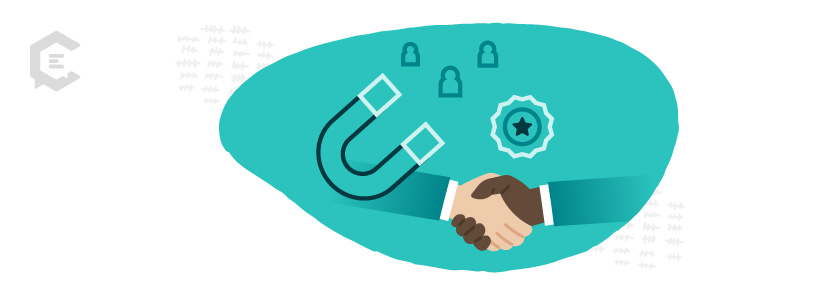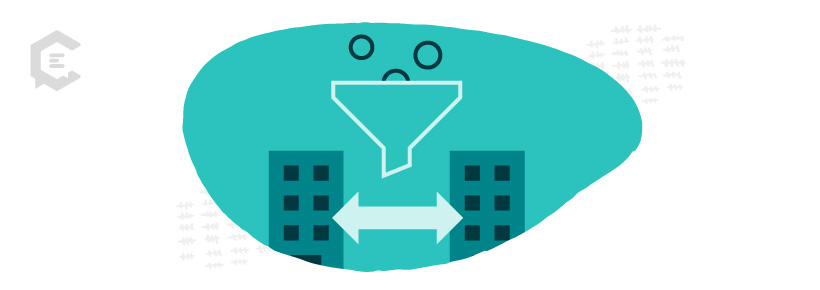Which approach is right for you when it comes to soft lead vs. hard lead generation? B2B lead generation is arguably the most difficult part of the B2B sales and marketing process. Most organizations in the B2B space usually experience long lead times that can take months to close. Teams can waste a lot of time chasing the wrong leads. That’s why it’s super important to know the type of leads that each team is trying to engage with.
A lead is essentially a potential customer who has typically indicated an interest in your product or service (or who may be in the market for what you offer), and a qualified lead is someone who has a high potential of converting into an actual customer.
There are several ways to bring in leads, and they are split between two main approaches — soft lead generation and hard lead generation. Adopting the right approach means setting the right expectation and matching your offer with what the lead is looking for, and can lead to a boost in conversion rates.
In this guide, we go over the difference between soft lead vs. hard lead gen and the different approaches companies should take to target these two types of leads.
What is a soft lead vs. hard lead?
A soft lead is someone who left their contact information on your site but hasn’t shown real interest in your product. Soft leads are typically less qualified and convert very well through “soft” techniques like an email sign-up form.
An example of a soft lead generation technique would be offering a giveaway for tickets to a sporting event, such as the World Series. Because baseball is a sport many people enjoy, you’re likely going to get entries into the giveaway with people who just want to win the tickets, and aren’t necessarily interested in your products or services.
On the other hand, a hard lead is usually a much more qualified lead who has a higher chance of converting and has shown real interest in your product. This might be someone who requested a demo of your product or downloaded your latest industry-specific case study.
The difference between leads is in your approach
The main difference between a soft lead vs. hard lead is your B2B lead generation strategy. Gathering soft leads may be essential for companies that are looking to jump-start their sales or want to catch customers early in the sales pipeline process.
While there are usually a greater number of soft leads to sift through when you use a more generic offer (like the sporting event tickets), using a soft lead approach is a good idea if you just need leads to fill the pipeline or if you’re just getting started with building a sales team.
Think of this as “quantity over quality,” as it doesn’t mean all soft leads aren’t going to pan out, but rather, it will take more time to find leads that turn into customers or actual revenue.
Using a hard lead approach is like taking the “quality over quantity” approach. When you’re promoting a really specific offer, such as a custom demo or niche case study, the lead generation outcomes are going to be much smaller. But, these leads are usually later in the sales cycle and will not only convert faster but at a much higher rate.
Another way to think about it is thinking of who you want to target specifically and how that might differ in the sales process. A soft lead approach could be better if you want to target enterprise-level recruiters. A hard lead generation approach could be better if you are targeting executive human resources leaders, at the enterprise level.
Here are a few other examples of more specific soft lead vs. hard lead generation strategies:
- Free software trial versus free custom demo
- Industry-wide annual report versus extensive case study about your lead product
- Free audit versus 20% discount on the first 6 months of services
As you can see, the types of offers can vary greatly depending on the industry, your products and services, and how you position yourself in the market.
Create the right lead gen strategy with soft vs. hard leads
The process of generating high-quality leads can be incredibly difficult. In fact, a Drip study found that 40% of B2B salespeople said prospecting is the hardest part of their job. That’s why it’s important to set expectations and guidelines for your sales team so they know what is needed from them and what goals they need to work toward each week, month, or quarter.
Need help deciding on what success looks like in terms of your B2B lead generation? Wondering which lead generation approach to use? Here are important questions you should ask yourself:
- Who is your target sales audience?
- Knowing who your ideal customer is is key to finding the best possible leads. You can do that either by creating customer personas or writing down a detailed explanation of who makes the best customer for your brand.
- What is your target number of leads?
- You have to decide how many leads should be coming through the pipeline. This will give a starting point for your prospecting team and from there they can work with the sales and marketing teams to develop campaigns and strategies that will bring in the leads on an ongoing basis.
- What is your target sales number?
- How much revenue are you expecting to generate for your target time period? Many times, having a growing number of leads isn’t the best predictor of revenue. Having a specific sales dollar amount can keep teams accountable during the review process. It also helps to have metrics like average revenue per customer (APRU).
- Do you want to pay for a lead?
- Many organizations will pay for B2B lead lists of pre-vetted potential customers. There are several companies that collect this information from various sources and sell large lists of contact information, based on target demographics like location, company size, or the prospect’s job title.
- If you believe paying for leads is a worthy strategy for your B2B lead generation efforts, what is the amount you’re willing to pay?
- Where should your leads be in the sales pipeline cycle?
- The sales pipeline cycle includes six steps: Awareness, Interest, Evaluation, Engagement, Purchase, and Loyalty. Being familiar with these steps can help you determine where leads should be in the process when you first speak with them.
- Knowing where your “ideal” lead is in the sales pipeline will determine whether or not you use a hard or soft lead generation approach.
These questions are going to give you a better idea of what to expect with your sales programs, so you can create a baseline of expectations for what success looks like for the program going forward. If you don’t know what success looks like when you start something, you’ll never know what needs improvement and what is working well.
What type of leads should I generate for B2B?
The first step is to identify the steps in the sale process your leads are in. Are they just beginning the buying journey? Are they comparing products? Or are they ready to buy? Your approach is going to vary based on which step they’re in. So a soft lead generation strategy would be best suited for leads that are in the beginning stages of the sales process.
These may be leads that need more education about your industry and the specific products and services you offer. They may not even know the industry terms for the issues they’re facing or the solutions that can solve them.
Alternatively, leads that are in the later stages of the sales process won’t need as much education about what you offer and how your product can solve their problem. They should have a better understanding of what they need and are now deciding between several different solutions. A hard lead generation approach is going to be better for them.
For instance, hosting monthly giveaways of t-shirts or other prizes to random winners who have signed up for your newsletter isn’t going to necessarily help them make a purchasing decision as to what works best for their business.
However, offering a free custom walk-through of your SaaS offering to the executive decision-makers can be extremely effective. It is going to give leads the best view into how your product works, what it’s like working with your team, and the pricing and other information needed to make a final purchasing decision.
Whatever scenario best fits your company’s sales goals can help you decide which approach to use in any given campaign.
The hybrid approach with soft leads and hard leads
Luckily, deciding between a soft lead vs. hard lead doesn’t have to be a “one or the other” solution. Many companies can (and do!) use both approaches with their prospects.
For example, you might see an offer to sign up for an email newsletter on the company’s homepage and across the blog, but then you’ll see hard lead approaches on other pages. Landing pages are a good example of this. A company can create a landing page for their custom demos for their hard leads and an introductory lead magnet page for their soft leads.
Depending on where the sales offer is located makes a big impact on what style of approach should be used.
Getting new leads is the hardest part of any sales process. But deciding your goals for the sales team, then how you’re going to get leads, are the first and second steps to having a successful strategy. From there, you’re able to build an ongoing sales strategy that drives leads, builds communication with prospects, and helps your sales team stay motivated and excited for what lies ahead.
What lies ahead
For successful lead generation efforts, you need to tailor your content to match the type of lead you’re targeting. Want to make sure you’re getting all the leads you can? Talk to a content specialist at ClearVoice today about getting high-quality content for soft and hard leads to boost conversions.







